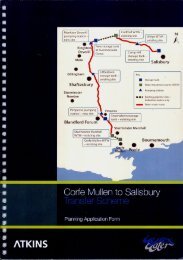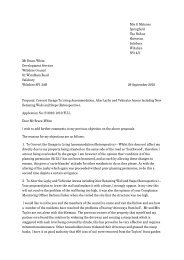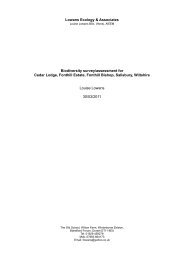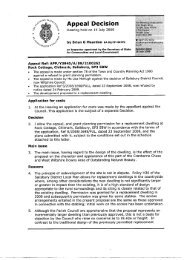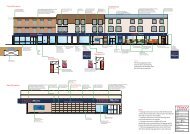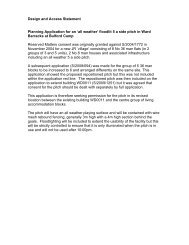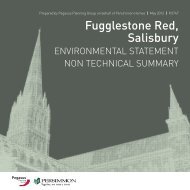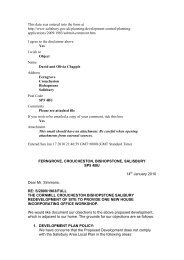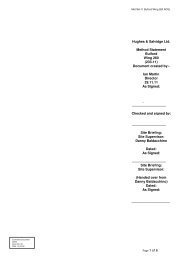English Heritage Stonehenge Environmental Improvements Project ...
English Heritage Stonehenge Environmental Improvements Project ...
English Heritage Stonehenge Environmental Improvements Project ...
You also want an ePaper? Increase the reach of your titles
YUMPU automatically turns print PDFs into web optimized ePapers that Google loves.
field. It comprised a range of typical arable weed species, including black bindweed Fallopia<br />
convulvulus, shepherd’s purse Capsella bursa-pastoris, common fumitory Fumaria officinalis,<br />
field and grey speedwell Veronica persica and polita, and can be referred to the NVC<br />
community OV7 Veronica persica-Veronica polita field speedwell- grey speedwell community.<br />
3.5.3 The crop within SW was more fully developed and as a consequence the arable weed flora<br />
was very limited in extent and confined to small field margins and corners. It was broadly<br />
similar in species composition to that within NW, although some species, such as black grass<br />
Alopecurus myosuroides, cut-leaved crane’s-bill and ivy-leaved speedwell, that were absent<br />
from NW were present in relative abundance in SW.<br />
3.5.4 There is a recently planted relatively species-poor hedge dominated by hawthorn between the<br />
field in SW and the adjoining road verges of the A360/B3086.<br />
South Eastern and North Eastern Quadrants<br />
3.5.5 SE and NE comprise very species-poor grasslands dominated by perennial rye-grass and<br />
cocksfoot Dactylis glomerata respectively, which can be referred to the NVC community MG7<br />
Lolium perenne-Trifolium repens perennial rye-grass-white clover grassland.<br />
3.6 Site Z<br />
Road verges<br />
3.6.1 Grassy road verges are present on either side of the B3086 and the Packway that are broadly<br />
similar in structure and species composition throughout. They are relatively species-poor NVC<br />
community MG1 Arrhernatherum elatius false oat-grass grassland. Small amounts of scrub,<br />
including bramble and blackthorn are also patchily present and trees have been planted on the<br />
northern side of the Packway to the south of Rollestone Camp.<br />
South Western and South Eastern Quadrants<br />
3.6.2 SW and SE are arable fields with very similar arable weed floras, which were largely confined<br />
to field margins and corners. The most abundant species throughout is cut-leaved crane’s-bill,<br />
although a range of other species is present, including barren brome, cleavers Galium aparine,<br />
thistles Cirsium spp., common poppy and knotgrass Polygonum aviculare. Of note was the<br />
presence of a small population of the Red Data Book Near Threatened species dwarf spurge<br />
Euphorbia exigua in the north western corner of NW.<br />
September 2008 9 Phase II Botanical Surveys<br />
11108605R_Botanical_DW_09-08<br />
Chris Blandford Associates



